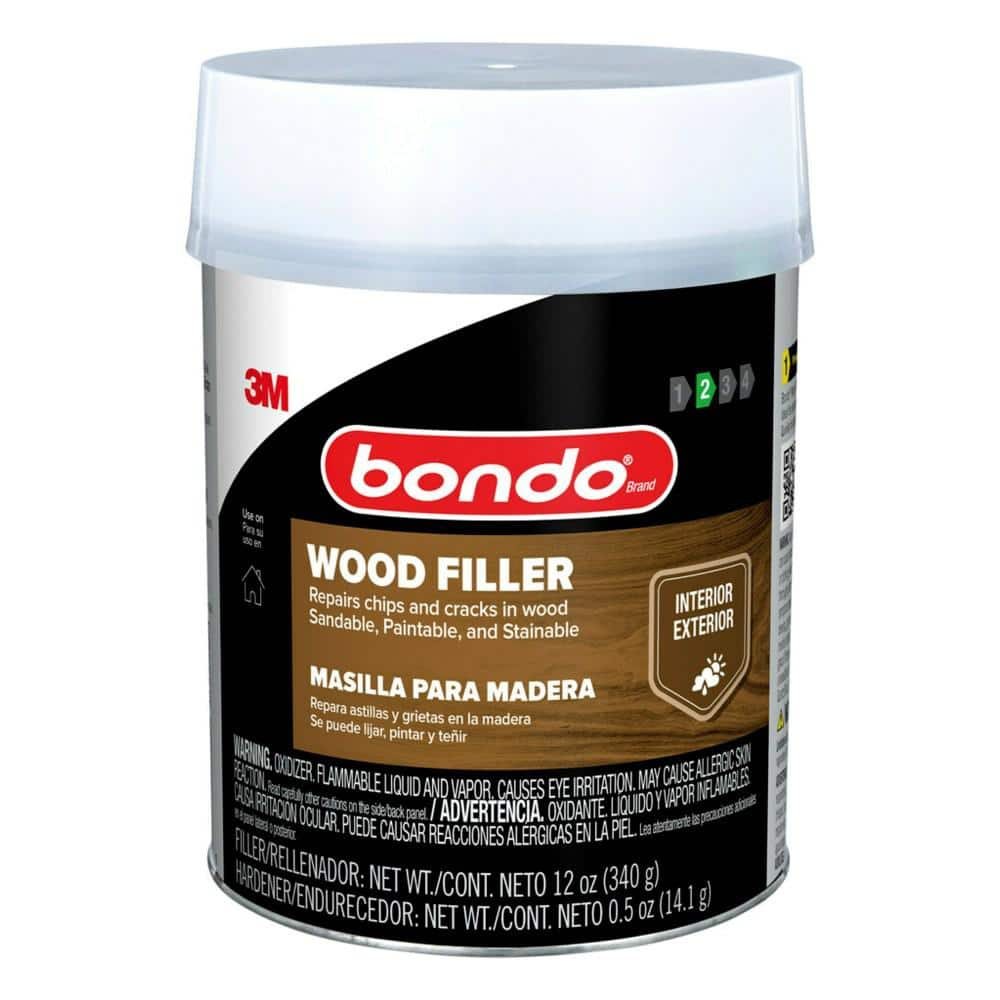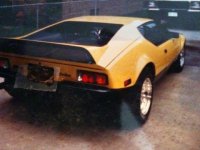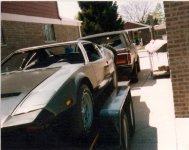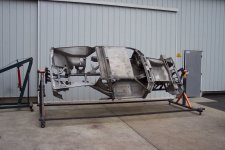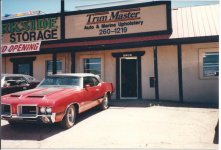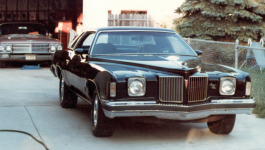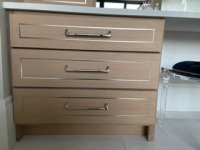Packard said:
tjbnwi said:
Packard said:
I use the basic Bondo, which is often the only type offered at Home Depot or Lowes.
There are also Bondo variants that include fiberglass fibers for larger holes, and ones with metal fibers for working on metal panels.
This is the one I use:
I did some bodywork on my Alfa Romeo back in 1970 - 1971 and I am fairly certain Bondo was an independent company back then and not part of the 3M Corporation.
Prior to that, they used to do “leading” for body repairs on cars. That is, they would melt lead alloy (basically, “solder”) and apply it to the body panels using wood paddles.
That approach remained for panel trucks that delivered foodstuffs as the original Bondo had ingredients that you really did not want to ingest.
I’m not a fan of 3M (Corporate), but they do make some excellent products.
Depending on the vehicle I’m working on I’ll use lead.
When my oldest daughter got her first car she wanted to repair the body and paint it. I had her form every replacement piece/patch, TIG them in place then solder the seams.
The new solders are lead free. I have a complete set of paddles, lead files, and a tin of tallow (have to tallow the paddles before “smoothing” the solder).
Back in the day I’d use various tints in the primer, this would allow me to see flaws during the wet/block sanding phase that were not evident other wise. Every panel was also “hand checked” in the dark. Now there are powder dusters for this.
As to the Nitrostan, never used it, always used the 3M line of fillers.
Tom
Modern cars have lighter gage body panels and some have fairly large, nearly flat surfaces. Too much heat on those panels, and I would imagine that they would tin-pan out of plane. That would be a difficult repair.
When auto body repairs need welded in steel patches over large areas, they space the welds and time between welds to avoid that heat buildup.
In any case, “leading” is more difficult, and requires skills that not many shops have. I would not imagine many are using that process.
Either process, if well-executed, will provide a satisfactory result.
Gauge of metals does not matter, expanse of panel does not matter. Both of these can be dealt with during the welding process. TIG welding introduces far less heat to the panel than gas, stick or MIG, the only process I can think of that introduces less heat is submerged arc. Properly sized, prepped and held in place goes a long way to mitigating any distortion in the panels. Cold air, cold water, ice and dry ice can pop a panel if applied properly.
Do they (we)? Again the welding process determines the application of the weld. Holding the panel in place with butt clamps, crimped and Cleco clamped, weld grips change how you go about the weld.
Lead is far superior to any other filler. It adds strength to the panel/repair, is water tight, will not crack or pop off if the panel/area is bent, will not shatter due to thermal shock (this happened to my daughter last week, very cold out, went through the car wash all of the filler on her Sequa shattered). Leading is how every automotive manufacture address any of the welded seams which must be made to look good (seam sealer is used in other areas). Leading is not hard, the area that needs to be addressed is warmed, lead “blobs” are placed, the lead is warmed, a tallowed lead paddle is used to shape the lead. Bondo is mixed, applied and shaped. (Both processes assume proper panel prep, which is the same) The difference comes in how the fillers are smoothed. With lead you use lead files to bring the lead to the final shape (never sand it). Bondo, a sander is used. Prior to current dust extraction methods a lot of Bondo dust was breathed in, even with a mask on. Both need to be glazed to address minor imperfections.
Thoughts on skills;
That’s what happens when emphasis is placed on collage instead of the trades. With the closing of school shops those who were not interested in collage were left behind (for the record I never attended collage as a student, I did teach in the automotive field right out of high school for 10 years at a community collage. I taught in all disciplines, my specialties were fuels and electrical) (Imagine the uproar if med schools and law schools were closed, ultimately they are nothing more than trade schools.) All they could hope for was someone bringing them on and allowing them on the job training.
About 7 mile from my shop is The Miill (link below) I’ve been told they are 1 of 1 in the country. I have and various members of my team have gone there looking to hire students/graduates. Every time we’re told they’ll come down to see the shop, they’ll bring a class down to see the shop, send students to apply for jobs. In the 5 years I’ve been bugging them it has not happened.
All but one member of my crew had no experience when they applied for the job.
Zach had years of experience due to his father being in the profession. He is extremely good at what he does. He has gone out on his own and is doing well.
Ashley is my finisher, she had never held a spray gun in her life, I give every new hire a few minutes on the gun so I can evaluate them. My 60 plus years of spraying told me Ashley had what it takes to be a great finisher in 30 seconds. After 3 years I’ll put her up against any finisher out there, including ones I’ve trained.
Matthew who is now in Texas at another cabinet shop has a degree in electrical engineering. No experience in woodworking, he became an excellent bench carpenter/cabinet maker.
Dale is good general help, he can operate the CNC. His attention to detail is a little lacking.
Emma could barely read a tape measure when she applied, in 2 years she became one of the shop leads and trainers. Unfortunately she has moved to PA.
Jamie, again no experience, she is getting better at what she does every day.
One person I had to “move on” was a “welder”, told him I need something TIG’ed, he said he didn’t know how to TIG. Not much of a welder. Didn’t work out in my shop at all.
There are about 8 others who just couldn’t grasp what we do.
I happy to see shop classes are slowly returning to high schools.
https://mill.wsd3.org/
None of the cars pictured below have any Bondo on them. It was what I did long before cell phones/cameras.
I do not have a picture of the Pantera’s on a rotator, I stole that pic off the internet. It gives you an idea what these cars went through during their restoration.
The Scarlett 442 was done in 83/84. The owner (he was the trimmer for the cars I built) moved to Colorado Springs in 85. When I got here in 2021 I was able to get a picture of it.
You’ll see the black Gran Prix, it was restored in 87ish, notice the ‘62 Cadillac in the garage, just finished that one up also.
Tom
